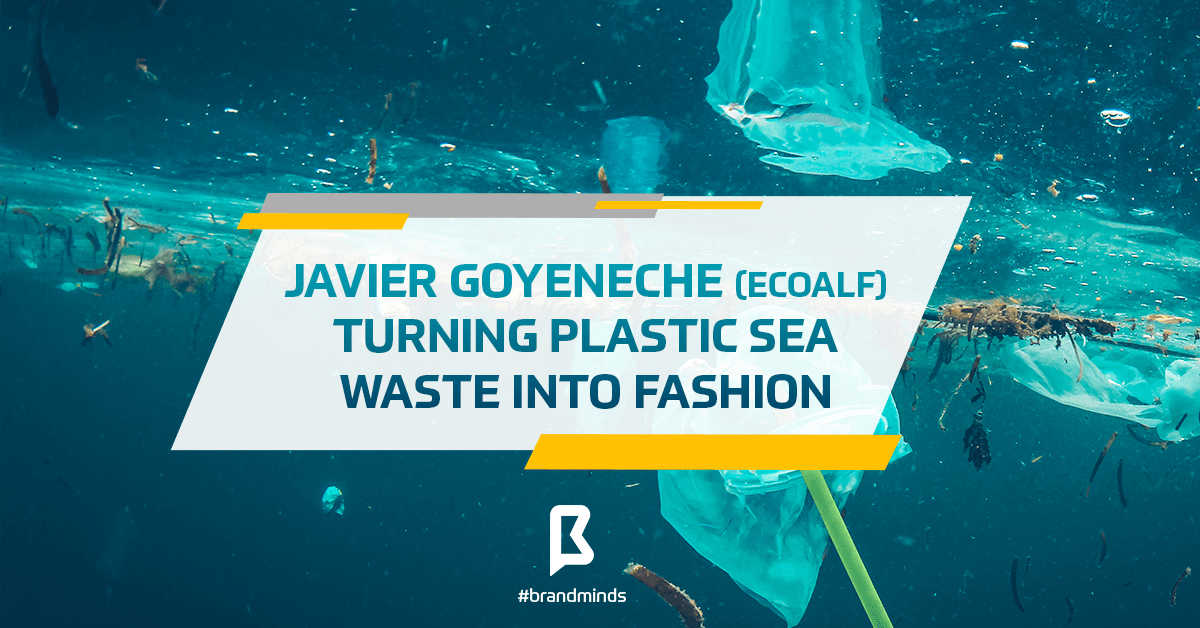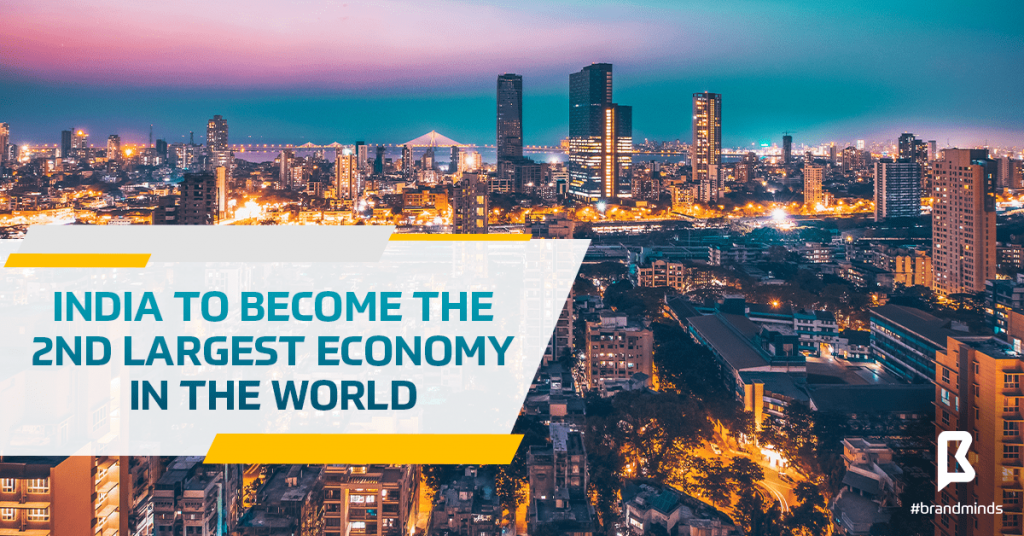What is Marketing About in 2019? Insights From 10 Marketing Professionals
One thing every marketer can never have too much of is information. Industry insights, customer data, sales trends, customer reviews etc – successful marketers are always searching for that one particular data or sets of data that will give them the opportunity to establish a connection with their customers’ minds or hearts.
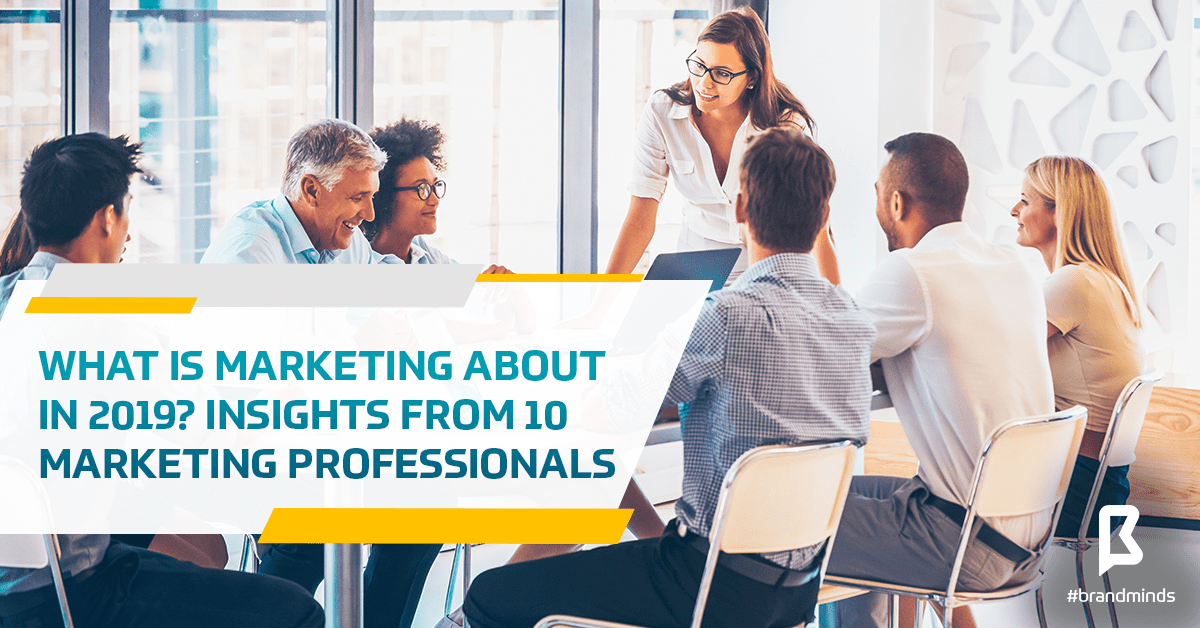
The best way to identify valuable trends and insights is by tapping into the knowledge of seasoned and savvy marketing professionals.
To this purpose, I invited 10 marketing professionals to share their insights. Together they have a combined experience of 140 years in the marketing trenches.
What is marketing about in 2019?
10 marketing professionals share their insights.
1. Nina Bratfalean – Marketing Manager, BMW Group
Triple E (EEE) and EWY. Engagement and Exclusive Experiences. Everything With You.

Nina Bratfalean
“Money can’t buy” experiences and customers engagement; those will be the highlights of the year, together with “everything you need with you” because BMW will be connected with the life of every person who chose the brand. Choosing to drive a BMW will bring joy in every moment they will be spending with their BMW while also making each journey easier.
Starting with 2019 BMW will introduce the highly anticipated Connected Drive to Romania. Internationally, BMW is designing new mobility concepts. Everything will be direct, integrated and transparent, which is opposite to the moderation you are used to. From now on, you will hear us saying “no guts, no glory”, you will also see that our communication will be more selective and interconnected with each and every step our customers take towards a completely digital CDJ (customer decision journey).
2. Andreas Elsner – Chief Officer, Residential Marketing and National Sales, Telekom Romania
Marketing in 2019 will entirely revolve around the customer.

Andreas Elsner
Companies will have to produce more personalized marketing content and be able to offer customers amazing, unique experiences.
And this will be possible by getting to know the customers better.
It will be crucial for marketers to find out customers’ communication preferences and deliver them creative, meaningful and valuable content.
Brands will no more be vendors, but trusted partners.
3. Calin Biris – Partner, Loopa Marketing Agency
Visual & audio content + Automation.

Calin Biris
For a small to medium company, this year can be about investing in visual and audio content that will be used in a smart and integrated way with the other marketing channels like e-mail, messaging, social media and ads. For example, a start-up could become well known if it will create a podcast or a YouTube channel about its niche or domain that will get traction (many subscribers and listeners). But this is only the tip of the iceberg, or let’s call it the cool part of marketing. For the start-up to get sales it will need to do advertising and have a good sales funnel, because content marketing it’s a long-term investment.
If we are talking about big companies that already have a working sales funnel and marketing action plan, what will be cool to do more this year is looking for ways to use automation in Social Media or in an Inbound marketing strategy.
4. Tara Hunt – CEO, Truly Inc.
The year of the reckoning for advertising.

Tara Hunt
I’m calling 2019 the year of reckoning for advertising – especially the practice of social platform ads – because of the growing revelations around click fraud and the realization that the metrics the industry has long relied on (impressions, reach and even engagement) are pretty useless.
Many brands are going to continue to see a decline in real results, which will leave them wondering what to do next.
My hope is that this will open up the long overdue conversation around accountability and goals in marketing that leads to a resetting of what we measure and how we approach the practice.
And my dream outcome of this will be for brands and marketers to stop chasing millions and billions of impressions and get back to the core definition of marketing: connecting companies with customers through understanding the market, development of the right product, finding the right channels to distribute, and creating the right strategy.
5. Ann Handley – Digital Marketing and Content Expert
In 2019, the email newsletter will re-emerge as an important nurturing tool.

Ann Handley
Companies will treat their email newsletter programs like the rare and precious flowers they are, in need of regular tending and attention. That means they will water newsletter audiences with a sprinkler, not a firehose.
“Hold up,” you’re thinking. “EMAIL? Is this 1999 or 2019? Isn’t this the age of AI and Facebook Live and video?”
Here’s why I believe in the power of email newsletters even more strongly today, in 2019:
1) An email newsletter is the only place where individuals—not algorithms—are in control. So what if marketing leaned into that inherently personal space?
2) Most companies today use their email newsletter as a distribution strategy. What if we focused not on the news but on the letter?
In January I relaunched my personal newsletter (annhandley.com/newsletter) as a way to talk directly to my audience. It’s taught me a lot about what works and what doesn’t in content and in marketing. Because I think the best email newsletters are also a kind of proxy for the best marketing in 2019, period.
6. Andrada Borda – Marketing Manager, BRAND MINDS & Digitalium
Less about mass audiences and more about niche targeting.

Andrada Borda
I believe that brands are starting to value the role their audiences play in the way they communicate on a deeper level. And when I say audiences, I mean the diverse and unique user profiles we are targeting because these days few things are about mass audiences and many are about niche targeting.
A brand’s communication strategy that once was prepared for a collective audience will now be split in two, three or more individual approaches, depending on the profile types that consume the brand’s product or service.
And that’s where you find the real challenge: to find and create ways to communicate for different types of audiences while maintaining your brand archetype, personality and values.
How would you speak in their language while keeping yours?
7. Chris ‘Kubby’ Kubbernus – Chief Executive Officer & Founder, Kubb&co
Marketing in 2019 is really what it has always been about. Relevance.

Chris ‘Kubby’ Kubbernus
How relevant is your brand and how relevant are your communications/content/marketing in today’s culture. And that’s not to say that you need to be famous.
But you need to be relevant to your customers, their needs and what’s on their minds. And often this changes very fast, so being agile, understanding your customers and then being able to act on that is key.
8. Antoine Dupont – Co-owner & CEO, Katapult Marketing
2019 is the year where the control of the narrative has shifted from the marketer to the people.

Antoine Dupont
The consumer has become increasingly vocal by how they engage and share their feelings about a company or a brand. More than half of the conversation about a brand is happening without the brand itself. Think about it for a minute. The brand used to have 100% control of the narrative about their brand. This is no longer the case.
To that end, brands and companies, now more than ever, need to nurture and respect the audience. They are sophisticated and expect to be treated with respect & dignity.
The brands that will win in 2019 will be the one who spends more time asking & listening rather than pitching & selling. Here is what people are saying: stop robocalling me, stop spamming me and stop funnelling me. Treat me like a HUMAN.
9. Nicole Yale – Global Account Director, Client Services – VaynerMedia
2019 is about bottom-up marketing at scale.

Nicole Yale
Digital can’t be ignored- we’ll see continued integration with other channels, but content marketing will also drive activity across touchpoints.
Marketers are realising the power of online data, near-instant access to consumer feedback, and the impact to be had in leveraging audience insights. It’s bottom-up marketing at scale- test, learn, amplify- to create work that’s more relevant and effective.
10. Ana Maria Bajan – Marketing Director, Caroli Foods Group
Marketing in 2019 will be FANTASTIC.

Ana Maria Bajan
2019 will be: FANTASTIC
Fan for bringing added value in the life of the consumers;
Assurance for your brand – make sure your brand is the first who conquers the heart of the consumers;
Nurture your communication channels with personalized messages;
To be easy to access & easy to use;
Automation is the key to effective marketing;
Stay relevant to your consumers;
Target your consumers effectively and efficiently;
Ignite your brand/category/business with a purpose;
Communicate transparently and instantly if possible with your consumers.
—————————————————————————————————————————————–
Care to share your opinion? Join the Conversation!
We’d love to hear what you have to say.
Get in touch with us on Facebook Group and Twitter.
The Health & Fitness Industry Is Estimated To Reach $100 Billion In 2019
This is article #3 of our new series of articles: the Growing Industries series. This series includes articles focused on industries that have experienced continuous growth in previous years to give you valuable insights and inspiration.
Check out our previous articles:
The Gaming Industry – No Longer A Child’s Play
and
The Petfood Industry Is Growing At A Fast Pace.
The Health & Fitness industry is growing at a rate of 10% CAGR and is estimated to reach $100 billion in 2019.
According to the Global Health and Fitness Club Market report, the global health & fitness market revenue reached a total amount of $87.2 billion in 2017 and is projected to grow at a rate of 10.6% between 2018 and 2023.
[bctt tweet=”The Health & Fitness Industry Is Estimated To Reach $100 Billion In 2019″ username=”brand_minds”]
Here are the main findings of this report:
- Consumers are willing to spend more on health and fitness clubs;
- The number of health clubs and gyms with personal training and the latest fitness equipment has increased;
- Yoga, aerobic dance, and swimming have grown in popularity among health and fitness enthusiasts;
- Awareness about the benefits of physical fitness has increased;
- One of the driving factors leading the growth of the industry is the rising cases of obesity especially in developed countries;
- The millennial and baby boomers are joining fitness clubs in raising numbers;
- Corporate wellness activities have seen a growth in demand.
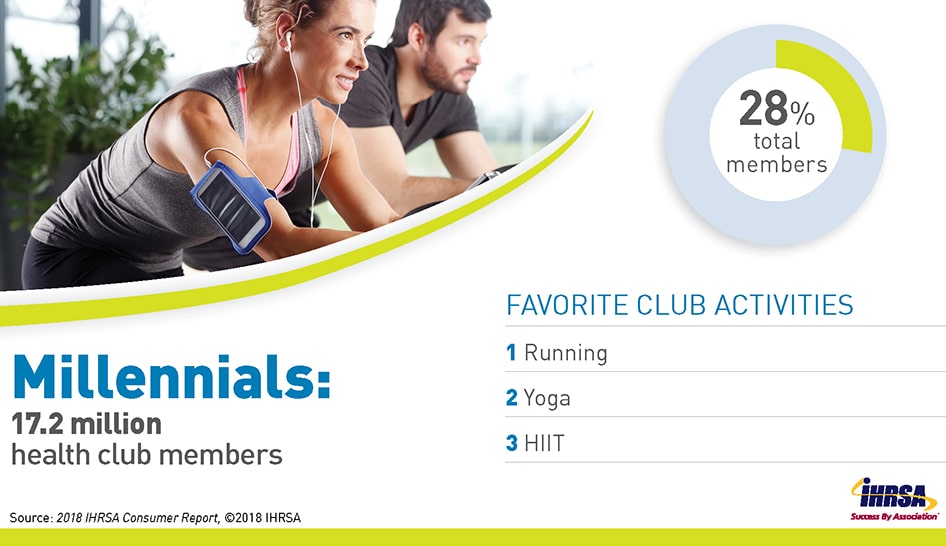
image source: ihrsa.org
The following 5 factors contribute to the health & fitness industry’s growth according to industry analysts:
1.Lowering of the health insurance costs
Healthy people drive insurance costs down and are less of a risk to insurance companies and employers.
Many employers incentivize their employees towards adopting a healthier lifestyle by covering the costs of a health club membership.
2. Increased demand for healthy foods
One of the most common memories we all have of our childhood is our mother telling us Eat your vegetables!
As children, we refused to eat any of the green stuff on the plate, but as adults, we are purposefully looking to eat more healthy foods.
In recent years consumer behaviour has seen a shift in demand: consumers are buying less industrial-scale processed food and more natural or bio foods.
3. Wearables support our decision for a healthier lifestyle
Wearable devices such as Fitbit, Apple Watch and many of the smartphones currently on the market are all helping us achieve our health objectives.
They play the role of personal digital assistants who promptly deliver personalized biometric health statistics. They help us keep track of our progress and steer us towards success.
4. Newfound freedom by streaming exercises classes
People have busy lives.
Women often juggle many activities every day while being mothers, wives, elderly caretakers and employees – all at the same time.
Being free to choose their preferred time to exercise instead of building their schedule around it is key to maintaining a healthy lifestyle. People are streaming fitness exercises classes to save time.
5. Attending outdoor obstacle races and competitions
Competing in outdoor obstacle races beats the ordinary running on a treadmill at the gym.
It’s much more exciting and the competitors feel the adrenaline rush closing on the finish line.
Through mud and water, on sand or grass, these races have been growing in popularity in recent years. The catch is – you need to train for them. That explains the growing demand for wearables and fitness classes.
![]()
5 Top Trends in the Health & Fitness Industry:
- Fitness trackers;
- Bodyweight training;
- Fitness programs for older adults;
- HIIT workouts (high-intensity interval training);
- Group training (a class with more than five people).
Top 3 Countries by Revenue according to IHRSA:
USA – $30 billion
Germany – $5.6 billion
United Kingdom – $5.5 billion
Top 3 Countries by Membership:
USA – 60.9 million
Germany – 10.6 million
United Kingdom – 9.9 million
Behaviour changes have given rise to new key groups in the UK:
- FIT Gen, 25-34-year-olds who prefer varied exercise experiences, in and out of the gym;
- Wellthy Gen, 35-44-year-olds who are striving to enhance their wellbeing by living an interconnected holistic lifestyle;
- Strong Women, a group of 25-44-year-old females who build their physical strength as a way of constructing identities and communities.
Health & Fitness Industry Global Statistics:
- Number of health & fitness clubs members: 174 million;
- Number of health clubs: 201.000; the US has the most health clubs at over 38.000 followed by Brazil with over 34.000;
- The region with the most opportunities for growth: the Asia-Pacific; there are 14 markets in the Asia-Pacific region which attract 22.5 million members at more than 25,000 health clubs.

image source: ihrsa.org
Join the Conversation
We’d love to hear what you have to say.
Get in touch with us on Facebook Group and Twitter.
sources:
statista.com
ihrsa.org
Make Your Workplace More Accessible To Employees With Autism
According to Autism Europe, there are around 7 million people with autism in the EU.
In order to draw attention to the urgent needs of people with autism around the world, the United Nations General Assembly declared 2 April the World Autism Awareness Day.
Studies have shown that between 76% – 90% of adults with autism are unemployed.
Although autism affects a person’s ability to interact with the people around them, autistic persons display innate abilities and skills. Attention to detail, enjoying repetitive tasks, lack of tolerance for errors, persistence and loyalty are some of these skills. Businesses could employ persons with autism to work on tasks such as software testing, programming and data-entry. Unfortunately, such opportunities for high-quality work have gone to waste due to autistic people’s high rate of unemployment.
The mission of Autism Europe and other organizations is to drive change by creating innovative employment opportunities for people with autism.

MyAccessHub is a platform designed to help businesses make their workplaces more accessible and more inclusive to autistic employees.
myAccessHub was co-founded by Gearoid Kearney and Miriam O’Sullivan.
Mr Kearney developed alvrCloud and is currently working on the 360 VR & Animation Content for the Programme.
Mrs O’Sullivan has over 10 years of experience working with children and adults with autism; she has recently completed her Masters in Autism and Technology.

image: myAccessHub on Facebook.com
The platform’s offer includes the following services:
- The Virtual Reality Experience immerses employees in scenarios that educate them on how small things within their workplace can have a huge impact on employees who have Autism and other Neurodiversities;
- The alvrCloud eLearning Platform educates all the employees within a business on the subject of Neurodiversity starting with Autism Awareness & Equality;
- The Onsite Training programme provides training onsite in Autism Awareness & Equality to the managers within a business.
myAccessHub from alvrCloud on Vimeo.
The 2018 National Startup Awards
myAccessHub is the Gold winner of the Social/Sustainable category at the 2018 National Startup Awards (Ireland).
Join the Conversation
We’d love to hear what you have to say.
Get in touch with us on Facebook Group and Twitter.
Living in the past is damaging to your future
Living in the past is damaging to your future and makes it harder for you to enjoy the present.
What does living in the past mean?
Yes, we think fondly of our childhood years and remember the joyful moments of being a kid and later a teenager.
Our parents were younger, and we got to spend time with our grandparents who fed us lots of sweets, spoiled us rotten and told us wonderful stories. It’s a way to remember our personal history – it’s nostalgia.

It’s normal to feel nostalgic about the good old days.
But when you find yourself sharing old stories with your friends every time you meet over drinks, that’s a sign you should stop and think about it for a minute.
Why am I always talking about the past?
Am I not happy with the present?
The past can’t hurt you anymore, not unless you let it.
Alan Moore, author of V for Vendetta
Stuck between The Golden Past and The Disappointing Present
[bctt tweet=”If you find yourself consistently thinking of or talking about the past, it’s highly probable you are not happy with the present. #livinginthepast” username=”brand_minds”]
Maybe you were more successful in your job; maybe you earned awards for your achievements in sports or academia which made you feel good about yourself, increased your self-confidence and self-worth.
Think about any attachments that are depleting your emotional reserves. Consider letting them go.
Oprah Winfrey
Should statements – tools of self-punishment
The past shines brightly and it feels good to return to it over and over again because the present is unsatisfactory or utterly disappointing.
Your present doesn’t match your expectations.
The sign which should tell you that you are disappointed with your current life is thinking or speaking in sentences which start with I should/shouldn’t.
I should have been a successful lawyer…
I should have had a lot of money…
I shouldn’t have turned down that job offer…
Should statements can lead to increased panic, anxiety and even depression. Psychologists say should statements are cognitive distortions.
What are cognitive distortions?
Cognitive distortions are simply ways that our mind convinces us of something that isn’t really true. These inaccurate thoughts are usually used to reinforce negative thinking or emotions — telling ourselves things that sound rational and accurate, but really only serve to keep us feeling bad about ourselves.
John M. Grohol, Psy.D.
These shoulds and shouldn’ts are ironclad rules that we use to punish ourselves.
How do we feel when we hear these shoulds in our minds?
We feel guilt and shame. It’s aggression directed towards our own self. It’s punishment and anger. At that particular moment, we hate ourselves. And nothing good comes out of hate.
Suffering is not holding you. You are holding suffering. When you become good at the art of letting sufferings go, then you’ll come to realize how unnecessary it was for you to drag those burdens around with you. You’ll see that no one else other than you was responsible.
Osho
Decisions instead of mistakes
To curb this abusive behaviour, practise awareness – it’s healthier and helps you break the emotional barrier of should statements.
Go past your feelings of shame and guilt and allow for your rational judgement to take place.
You may be thinking about your past in term of making mistakes. Only they are not mistakes, they are decisions.
You never set out to make bad decisions, no one does.
You made good decisions. At that particular time, the reasons behind your decisions were correct. It’s what you decided based on the information you had at that moment. Once you realise this, you will feel empowered.
You don’t have a crystal ball to know the future so you couldn’t have possibly known that your decision would turn out to be negative.
You must also realise the future is outside of your control. Taking all this into consideration, why would you punish yourself with your past decisions?
Right actions in the future are the best apologies for bad actions in the past.
Tryon Edwards
Make peace with yourself
Make peace with yourself and your past decisions.
Acknowledge your skills and talents.
Get yourself unstuck with the present.
Start imagining your future and begin working towards it.
Join the Conversation
We’d love to hear what you have to say.
Get in touch with us on Facebook Group and Twitter.
Diana Miron (JSLeague) – Changing The World One Block Of Code At A Time
Diana Miron is the CEO and co-founder of JSLeague.
A front-end developer and designer herself, Diana founded JSLeague as an intensive JavaScript school with headquarters in Romania, catering to the needs of the developers’ community in the Central Eastern European region.
With hard work and delivering real value, Diana and her team managed to build 6 communities, attracted 8 expert trainers to share their knowledge through workshops and put together 50 events to date. The JSLeague community includes over 3100 community developers.
Forbes 30 under 30 included Diana Miron, “a front-end developing guru” in its 2019 European list for Technology.
Excited and proud to learn of her accomplishment, I reached out to Diana looking to know more about her and JSLeague.

Diana Miron, CEO & co-founder JSLeague
1. What is the story behind JSLeague? How did it all start?
The story starts back 3 years ago within the Bucharest JavaScript community, the biggest community of JavaScript developers in Romania. Every month we organize meetups where members are able to present new ideas and interesting projects on different technologies.
JSgirls developed as a spin-off community for girls, having delivered JavaScript workshops in high schools in collaboration with Codette, an NGO that empower women to take a career in programming.
JSHacks, the first JavaScript-based hackathon came afterwards as a way to help programmers develop solutions to real-life problems while tackling challenges such as Open Data or technologies such as Blockchain and Machine Learning.
JSLeague started from this community with the focus on providing higher education to developers and taking them from good to great, inspiring them to be leaders within their teams and unite them into developing solutions for real problems.
We want to give developers from our community free access to the best tech trainers and the newest JS curricula throughout our JS workshops. We cover all JS tech stack and beyond, focusing on both the technical and soft skills by integrating Agile and Scrum methodologies with the help of our partners, Dovelopers.
JSLeague is the first organization to have built such an ecosystem around web technologies in Romania.

BucharestJS Meetup (image source: Facebook)
2. Your goal is to have a positive impact on the JavaScript community in the CEE region. Tell us three challenges you were faced with while working to achieve this goal.
We deeply believe that both people and companies should invest more in education at all levels. This investment requires time and effort from both parties and is developed throughout a large period of time and cannot happen overnight no matter how fast we would like it to be. We believe that this is the biggest challenge both ourselves and the environment are facing at the moment.
Building a community of united developers requires a spirit of collaboration and knowledge sharing from all entities involved, this being a JSLeague core value.
Unfortunately, there are people that don’t share the same values with us and this is a challenge in doing great work together. We believe that as a community we can achieve and contribute more to the world than individuals.
Lastly, another challenge we faced is the communication between companies and developers. We think that this communication should be more personal and authentic. We want to help both sides understand each other, their requirements, desires and needs in order to develop great products thus bridging the gap between them.
[bctt tweet=”Diana Miron@JSLeague: We believe that as a community we can achieve and contribute more to the world than individuals.” username=”brand_minds”]
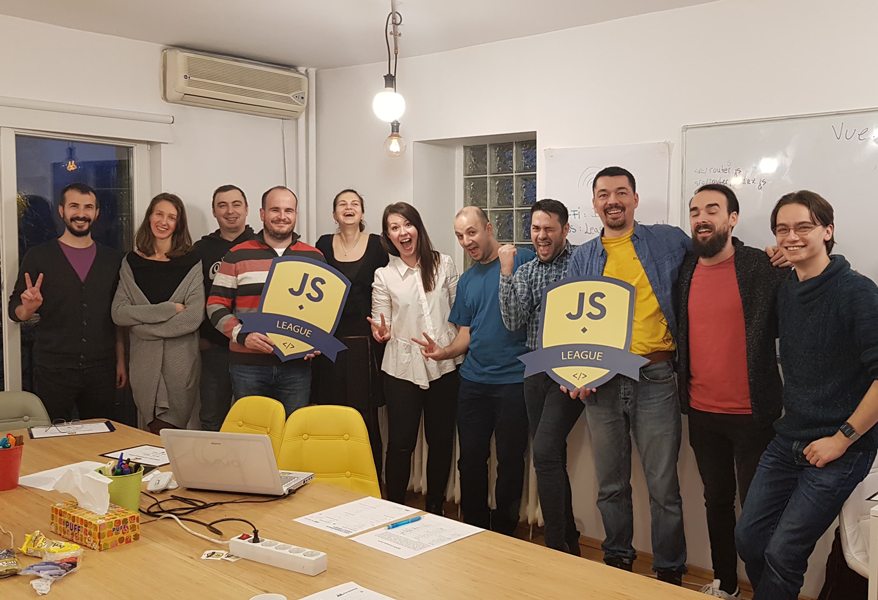
Diana Miron and the JSLeague team / jsleague.ro
3. What are the core values of your leadership and how is your leadership changing the world?
With education, passion for programming and giving back as our core values, we encourage developers to be open source contributors, to build better software products and to share expertise across tech communities by giving access to tech influencers, leaders or investors.
We highly believe in giving back to the community and giving access to free tech education, starting with kids to high school students to experienced developers. This is the reason most of our efforts are put into hands-on JS workshops and into community events.
JSLeague is a space where developers can play with new technologies, build products and share their knowledge.
Each one of us, members of the community can put their unique skills to contribute both locally and globally to projects thus changing the world one block of code at a time.
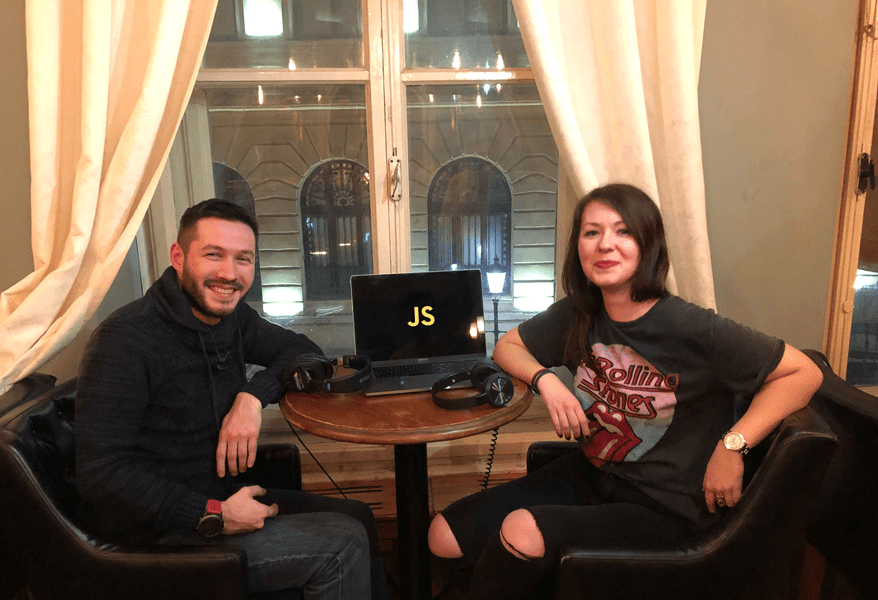
JSLeague Podcast: Diana Miron and Mihail Serafim before going live
Join the Conversation
We’d love to hear what you have to say.
Get in touch with us on Facebook Group and Twitter.
10 Marketing Blogs Every Successful Marketer Should Follow (2 of 2)
Apart from books, marketing blogs are the next best thing for every successful marketer eager to learn: marketing experts and trendsetters write down their ideas and insights in easy to read articles.
Read recommendations 1 through 5 in the first part of this article: 10 Marketing Experts Every Successful Marketer Should Follow (1 of 2).
Let’s continue with our blogs recommendations 6 through 10!
6. Mari Smith – Mari’s Blog

Mari Smith / linkedin.com
Mari Smith has been working in internet marketing since 1999. She is one of the world’s leading social media thought leaders, often referred to as the Queen of Facebook for her Facebook marketing expertise.
She ranked at #4 in Forbes “Top Social Media Power Influencer” and was designated by Facebook Small Business and Facebook Marketing Expert. She is a founding contributor to Social Media Examiner, one of the world’s largest business blogs.
She is a keynote speaker and the author of The New Relationship Marketing and coauthor of Facebook Marketing: An Hour A Day. The book outlines a step-by-step plan for building a sizable, loyal network comprised of quality relationships that garner leads, publicity, sales, and more.
Mari’s blog is called ….Mari’s Blog (easy to remember :)).
On her blog, Mari writes about everything social: how to optimize your social media conversion strategy, Facebook video marketing, why newsletters are the future of online media, how to write Instagram posts to boost your business etc.
Service is the new social. Exemplary customer service will never go out of style.
Mari Smith
7. Mark Schaefer – {Grow}

Mark Schaefer / linkedin.com
Mark Schaefer is a speaker, consultant, educator and marketer with extensive experience. He is also an inspired writer on topics related to marketing. His latest book Marketing Rebellion: The Most Human Company Wins has just been published earlier this year (learn more about Mark and his book).
Mark’s blog is called {Grow} and, as the name has it, it features articles on marketing, technology and humanity to help businesses grow. On his blog, Mark writes about marketing strategy, influence marketing, big data and analytics, branding, corporate communications etc.
The most important characteristic of content marketing today is not quality or quantity. It’s insight. And that is the differentiator lacking almost everywhere.
Mark Schaefer
8. Tara Hunt – Truly Inc

Tara Hunt / linkedin.com
Tara Hunt is an executive-level digital marketing professional with over 20 years of progressive experience. She specializes in relationship and inbound marketing with a passion for data-driven strategy.
Tara and her team are on a mission to change the relationship between brands and their customers. They believe there is a better way to market your brand than through yelling and hand-waving.
Before Truly Inc, there was (and still is) Truly Social, Tara’s YouTube channel where she delivers insightful (and fun to watch) videos on everything marketing.
On her company’s blog, Tara writes articles on hot topics like influencers, engagement, content etc. What makes her articles stand out from the rest of the content available on the world wide web is her ability to provide a unique and insightful perspective. Here are a few titles: Content is worthless, Why branded content doesn’t work, Buying Facebook Ads is not a strategy etc.
Content, engagement and influencers are worthless but only when they are seen as promotional tools used to fast-track results.
Tara Hunt
9. Jon Loomer – jonloomer.com
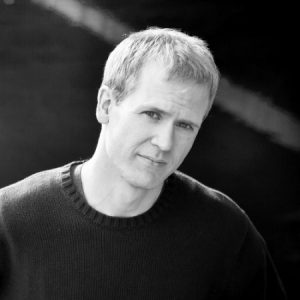
Jon Loomer / linkedin.com
Jon Loomer is widely known for his Facebook advertising expertise. He is a Facebook Marketing Strategist and Metrics Master.
Social Media Examiner recognized his website, jonloomer.com as one of Top 10 Social Media Blogs of 2013, 2014 and 2015. His website is the most complete online resource of advanced Facebook marketing tips and tutorials, updated on nearly a daily basis.
Although he sees himself as an “accidental marketer”, there are no accidents when it comes to his career in Facebook marketing and advertising. His strength lies in his love of numbers, statistics and strategy which are all required traits for a marketer looking to manage successful Facebook advertising campaigns.
Jon started his website in 2011 and the number of articles he has written insofar will soon reach 1000 by the end of March 2019. That’s a lot of knowledge!
If you are looking for valuable insights and expert tutorials on Facebook advertising, Jon Loomer is the best marketer to turn to.
10. Aaron Orendorff – iConiContent

Aaron Orendorff / linkedin.com
As a marketer, you need to be able to write content, ideally – great content. Fortunately, writing effective and results-focused content is a skill you can learn.
Aaron Orendorff is a copywriter, Editor in Chief of Shopify Plus, one of the fastest growing e-commerce companies in the world and founder of iConiContent.
His mission is to save the world from bad content. Aaron’s articles on iConiContent are packed full of recommendations, insights and examples on how to write great content which adds value to your customers’ lives.
Here are a few examples: Failed Copywriting Pitch – 5 Lessons, 3 Audience-Enticing Headline Hacks: Power, Novelty & Pull, How to engage and captivate your audience…when they don’t want to listen.
Every piece of content you create has to do two things: (1) rescue its audience from their own personal hell and (2) deliver them unto their own personal heaven. Great copywriting is about salvation … not sales. If you’re not in the business of actually helping people, stop here.
Aaron Orendorff
Join the Conversation
We’d love to hear what you have to say.
Get in touch with us on Facebook Group and Twitter.
LinkedIn Report: 4 Trends Transforming The Workplace in 2019
LinkedIn, the 600 million users social network has released its 2019 Global Talent Trends Report. The report highlights four trends transforming the workplace in 2019.
The researchers have surveyed over 5000 talent professionals in 35 countries interviewing company leaders, speaking with experts, and observing activity on the LinkedIn platform.
Here are 4 trends which are set to transform and shape the workplace in 2019:
- Soft skills;
- Work flexibility;
- Anti-harassment;
- Pay transparency.
1. Soft Skills
A.I. may be able to write news articles and making movie trailers, but they cannot display soft skills.
Creativity, persuasion, collaboration, adaptability and time management are valuable soft skills employers actively look for when searching for new hires.
80% of surveyed employers say soft skills are increasingly important to company success. The challenge that companies are struggling to overcome is the process by which to identify the aforementioned soft-skills. According to this report, 57% of employers struggle to assess soft skills accurately.
LinkedIn: 6 tips to help your company assess your candidates’ soft skills
1.Determine the soft skills valued most at your company by taking the following steps:
- interview your company’s leaders;
- identify the skills shared by your top performers;
- consider the skills your company needs to take on future challenges.
2. Identify and define the skills needed for a given job.
3. Consider online tools to prescreen candidates – these tools assess their soft skills systematically and with less bias (ideally).
4. Be mindful that bias can creep in.
5. Standardize your interview questions.
6. Ask problem-solving questions to see soft skills in action.
A case study on hiring for soft skills and hard skills

Citi, the Wall Street firm is not hiring for technical skills alone.
The company uses problem-solving case studies and group exercises to showcase candidates’ collaboration, communication, and leadership skills.

2. Work Flexibility
Between 2013 and 2017 candidates’ request for flexible workplaces has increased from 25% to 31%.
Since 2016 the number of job posts on LinkedIn which mention flexibility rose to over 78%.
The ability to work from any place outside the office has been driven by technology and required by an increasing number of employees who are looking to improve their work-balance life and be more involved with their family.
Here are the top benefits of work flexibility as mentioned by talent professionals:
- Improves employee work-life balance – 77%;
- Encourages retention – 54%;
- Attracts candidates – 51%;
- Increases productivity – 42%;
- Expands available talent pool – 38%.
Women candidates are more inclined to look for flexibility when considering a job offer.
The LinkedIn report found that 36% of women and 29% of men say flexible work arrangements are very important when considering a job.
PwC has identified five megatrends which will influence the world and shape the business environment of 2019.
One of these trends is the demographic and social change that is driven by the ageing population which is the fastest growing segment today. The ageing population brings disruption to the traditional life cycle of education, work and employment and increased costs on healthcare.
The solution to this situation lies in the business environment.
To succeed and thrive, businesses need to harness the power of older workers and women. Businesses catering to women’s needs will see increased productivity and reduced turnover.
Discover 4 flexible work strategies in our article:
Employees Stress – Causes, Business Costs and What To Do To Prevent It
A flexible workplace is also known to bring difficulties in collaboration and bonding. Have no fear, technology comes to the rescue! There are many tech solutions to overcome remote work challenges like instant messaging platforms, collaboration tools, audio and video conferencing etc.
LinkedIn: 6 steps to building a flexible work culture
- Know what types of flexibility your employees want;
- Optimize your office space for a semi-remote workforce;
- Help employees connect through technology;
- Promote your flexibility policy in job descriptions, candidate interviews, and employee meetings;
- Train leaders to manage flexible workers;
- Tailor your flexibility policies to fit local cultural contexts, needs, and goals.
A case study in work flexibility

Nearly 60% of Dell employees work flexibly. Dell’s flexible program has saved the tech giant an average of $12 million annually since 2014 due to reduced office space requirements.

3. Anti-Harassment
The #metoo movement spread like wildfire across the globe in 2017. The first spark was ignited by the high-profile harassment cases in the US entertainment industry. Over a short period of time, harassment cases voiced by women encompassed the business environment across multiple industries.
One may believe that companies didn’t have anti-harassment policies before the #metoo movement. They had only they didn’t prevent unacceptable behaviours from happening; the company culture was such that harassment and assault cases went unreported to management. Harassment victims didn’t believe they would be heard or that management would take any actions towards their assailants.
LinkedIn found that workplace harassment content shared on its platform increased by 71% year on year.
Employers are seeing anti-harassment as a business necessity, not just a legal and moral one. Hostile workplaces hurt the bottom line through lost productivity and turnover, while respectful ones attract talent and improve engagement.LinkedIn, The 2019 Global Talent Trends Report
75% of the talent professionals surveyed by LinkedIn said they had noticed the following behavioural changes among employees over the last two years:
- Speaking up more when uncomfortable;
- Discussing social issues more openly;
- Calling out bad behaviour more;
- Telling fewer insensitive jokes;
- Willing to listen more.
Here are the most effective anti-harassment tactics as mentioned by the surveyed professionals:
- Promote ways to safely report;
- Establish a zero-tolerance policy;
- Add more ways to safely report;
- Hold training sessions;
- Increase gender diversity of leadership;
- Add or improve policies.
LinkedIn: 4 steps to help combat harassment
- First, understand where you are before you can see what needs to change: review your existing policy, understand what your employees want, rethink well-intentioned practices that can backfire, get buy-in from the top.
- Give your policy a refresh: tell people exactly how you handle harassment claims, give employees multiple ways to report, define good behaviour, too, adapt your policy to local needs;
- Train and communicate: focus on the grey areas, make it interactive and personal, be inclusive of all victims, complement customized training with external resources, empower employees to step in when they witness an offence, not just when they’re a target.
- Respond and follow up: help victims feel safe from the start, tailor the response to the severity of the offence, respond to inappropriate behaviour publicly and with real consequences, reach out to victims even after your legal obligation is fulfilled.
A case study on anti-harassment
Last year 20.000 Google employees left their offices in New York City, Dublin, Berlin, Singapore and other cities around the world to protest against the company’s handling of sexual misconduct and inequality. Google walkouts forced the big company to review its harassment and transparency policies.
In an email sent to employees, Google CEO Sundar Pichai acknowledged previous shortcomings and laid out a plan to make changes:
We recognize that we have not always gotten everything right in the past and we are sincerely sorry for that. It’s clear we need to make some changes.
Going forward, we will provide more transparency on how we handle concerns. We’ll give better support and care to the people who raise them. And we will double down on our commitment to be a representative, equitable, and respectful workplace.Sundar Pichai
4. Pay Transparency
For years, employers refrained from disclosing too much information about employee salaries. They feared a transparent process would cause wage disputes, limit their ability to negotiate, and encourage competitors to poach talent. Salaries were kept a secret under the thick blanket of confidentiality.
The problem is when people don’t have enough information, they tend to fill in the blanks with negative assumptions.
A 2017 report conducted by PayScale showed that 61% of surveyed employees believed they were underpaid compared to other colleagues.
If employers are looking to attract the best and the brightest, they should include pay transparency in their hiring strategies.
Searching for conversations focused on pay transparency, LinkedIn found that the content shared by its users on this particular topic has increased by 136% since 2014.
But not all employers are ready to shift gears so quickly. As reported by talent professionals, 27% of companies share salary ranges, 22% don’t share but are likely to start and 51% don’t share and are unlikely to start.
Benefits of sharing salary ranges as highlighted by LinkedIn in its report:
- Streamlines negotiation;
- Ensures fair pay;
- Filters out those who’d decline;
- Allows interview to focus on other things.
LinkedIn: 7 steps to establish pay transparency
- Conduct an internal audit to see how your pay compares to competitors and whether you have any major pay gaps across gender, race, and those in similar roles;
- Decide how transparent you want to be;
- Solicit employee input;
- Develop clear compensation criteria;
- Train managers to discuss pay appropriately;
- Take it one step at a time;
- Communicate clearly as you roll out the policy.
A case study on pay transparency

Buffer began sharing salaries publicly online in 2013. The company uses a salary formula which meets the transparency criteria for each of its employees. The formula determines every employee’s pay based on their experience, local cost-of-living, and the market rate of the role. Buffer employees are happy with the company’s pay transparency strategy because it ensures they receive equal pay for equal work. They also feel valued and respected when they know they are being paid fairly.
Join the Conversation
We’d love to hear what you have to say.
Get in touch with us on Facebook Group and Twitter.
This Platform Connects Silver Agers With Businesses

According to PricewaterhouseCoopers, people over 65 – Silver Agers – are the fastest growing segment of the population: there will be 390 million more of them in 2030 than in 2015. Many advanced countries are already faced with a decrease in population growth.
Ageism is causing a shift in the demographic profile which will bring disruption to the traditional life cycle of education, work and employment.
Learn more: PwC – 5 Megatrends Affecting Your Business in 2019
Instead of looking at this trend from a negative standpoint, let’s put a 180 degrees spin on it and see it for what it is: an untapped resource for businesses in all industries.
That’s exactly the offer of WisR – the platform connects experienced and active older men and women (aka Silver Agers) with businesses.

WisR – Don’t grow older, grow wiser
The problem
- 44% of the European population will be over the age of 50 in 2030;
- Businesses can no longer ignore the demographic change taking place right now;
- If they want to survive and thrive, businesses need to find ways to take advantage of the experiences and knowledge that older people have still to offer to them and to society at large.
Many people want to continue working when reaching retirement age. They want to shape the future and be part of it. Gardening simply doesn’t do it anymore.
WisR
The opportunity
- Today people reaching the age of retirement feel fifteen years younger;
- According to scientific research, a 60-year-old person today has the biological age of a 40-year-old one hundred years ago;
- The Silver Agers want to continue working actively;
- Being employed gives them a sense of purpose and fulfilment;
- It is sometimes their opportunity to finally pursue their dream job.
The solution
WisR offers a platform which connects Silver Agers based on their professional experience with businesses looking for new employers.
As long as I’ve got my brain and my bones are still good, I’ll always work.
Klaus Stockreiter, 73 has found his job at WisR
WisR – a win-win solution
For businesses, WisR is a recruiting platform where they can find their next highly experienced employers.
For Silver Agers, it is an easily accessible resource to explore job offers.
By connecting generations, the WisR platform has an important social impact in that it promotes a positive perception of age.
Because people of all ages are valuable to the labour market.
WisR
Awards & Recognition
At the 2018 Central European Startup Awards, WisR won Best Austrian Social Impact Startup.
Join the Conversation
We’d love to hear what you have to say.
Get in touch with us on Facebook Group and Twitter.
Javier Goyeneche (ECOALF) – Turning Plastic Sea Waste Into Fashion
Javier Goyeneche is the founder of ECOALF, the Spanish company which turns plastic sea waste into high-quality fashion products.
ECOALF is a fashion company that created a new 100% recycled filament, Sea Yarn, which is made of the plastic bottle collection found in the bottom of the Mediterranean Sea.
The sea yarn is further used to create high-quality fabrics which ECOALF turns into a new generation of sustainable products.
Through this process, one sweatshirt alone saves 6200 litres of water. ECOALF designs and makes fashion clothes, footwear and accessories for women, men and children.
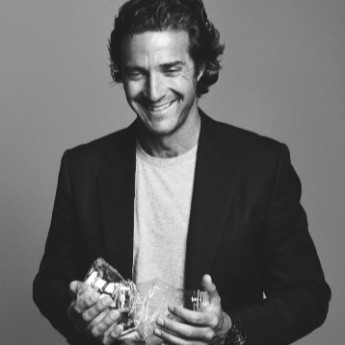
Javier Goyeneche, founder of ECOALF/linkedin.com
Javier Goyeneche’s commitment to put an end to the endless pollution of the environment prompted him to take the next step: setting up the ECOALF Foundation.
The mission of the ECOALF Foundation is to upcycle the oceans of our planet. The foundation is currently running two projects: Upcycling the oceans in Spain and Thailand.
The project in Spain started in 2015 and involved 28 ports amounting to a total of 441 sea trawlers and over 4000 fishermen. To date, more than 200 tonnes/year of marine debris has been recovered from the bottom of the Mediterranean sea.
In 2016, the Ecoalf Foundation started the Upcycling the Oceans project in Thailand. According to statistics, 8 million tonnes of trash end up in the oceans every year. 60% comes from a range of Asian countries. This project promotes the collection and management of plastic waste in Thailand’s coastal and marine tourist areas. Project activities include scuba divers collecting plastic waste from underwater as well as other volunteers collecting plastic waste from beaches.
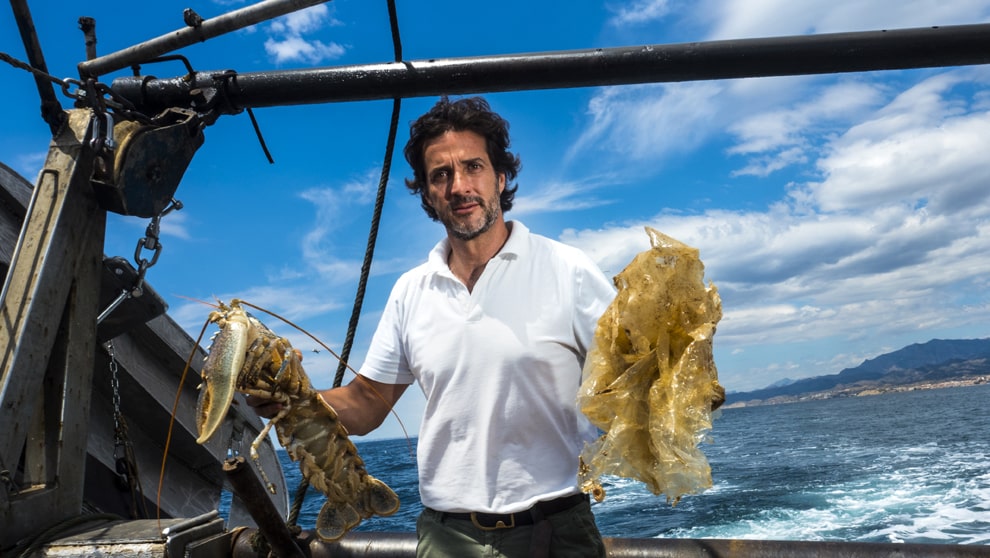
mundotextilmag.com.ar
I was interested to know more about Javier Goyeneche’s mission to produce high-quality fashion and cleaning the oceans of plastic waste at the same time so I asked him the following questions:
1. What is the story behind Ecoalf? How did it all start?
The concept ECOALF was born in 2010 after the birth of my son, Alfredo (the company is named after him).
At that time I was reflecting upon the world we leave to the next generation and felt frustrated with the excessive use of the World’s natural resources.
I decided to create a fashion brand that is truly sustainable. I thought the most sustainable thing was to stop using our natural resources in a careless way.
2. As a champion of sustainability, name a few of the challenges that you were faced with while building your company.
Uff, there have been many. In terms of clients, the concept of recycling is for many of them something negative and synonym of bad quality. They seem to think we recycle the old blanket of the grandmother to make a backpack. I have and spend a lot of time and energy trying to prove that ECOALF is about innovation + design.
Also, my goal was to create a sustainable brand where the price would be affordable (unfortunately most sustainable products are expensive).
In terms of production, we are constantly facing challenges. Trying to be as sustainable as possible is not easy and requires huge and constant effort.
3. Which was harder: to change technologies or people’s minds?
Through investment and patience, we have proved we were able to do many things they told me wouldn’t be possible.
Changing peoples minds is a constant effort. Unfortunately, our actual fashion model with t-shirts at 3 euros is not sustainable and is creating a huge negative impact on our planet. People want to be sustainable but don’t want to change their habits.
Read our previous Success Stories about travelling gamification, building the homes of the future, and creating custom software.
Join the Conversation
We’d love to hear what you have to say.
Get in touch with us on Facebook Group and Twitter.
Internet of Things and Marketing – 5 Predictions
Smart products use the Internet of Things (IoT) technology. It is changing the world.
But what does that translate to in the marketing world?
What can be expected in the years to come?
How will branding and marketing strategies have to change to capture this new emerging market?
Keep reading to discover 5 predictions regarding the way the Internet of Things (IoT) will change and improve marketing.
What is a smart product?
Smart devices have the ability to connect to the internet. This also enables a smart product to connect to another device. It makes use of IoT technology to establish connections to the internet and other products.
Smart products help to create new ways of automation. You can track, monitor, and control a smart product with another smart device.
What is IoT?
The Internet of Things is the giant network on which smart devices share information.
IoT data is stored in cloud technology and guarded by companies like manufacturers, marketers and other online service providers.
5 Predictions for IoT and Marketing
IoT technology is shaking things up. It’s changing the very face of many industries.
From manufacturing to healthcare, new depths of information are available. It is disrupting business as usual.
1. New Digital Devices Will Be Created
A need has caused the birth of many an invention. Smart devices have many more applications available. But, these devices will cause new needs to arise. Look at the rate at which portable and rechargeable power banks have spread across the world. People want on-demand recharging for their devices. The need for electricity in remote places has birthed an invention. Just so will IoT and its needs birth new inventions.
2. IoT Data Will Change Contextual Marketing
Millions of smart devices are already in operation all over the world. Big data is an understatement when it comes to harnessing worldwide IoT data. Users and customers will be tracked over the various products they own and use.
Marketers are able to pinpoint certain behaviours and preferences of customers. Marketing campaigns will be much more focused to try and increase their turnover rate. It may very well increase customer engagement due to new access to information previously unavailable.
3. IoT Data Will Be the Modern Day Gold Rush
IoT data and its uses will enjoy very high demand. And a higher demand always drives a higher price. IoT data will be expensive.
Companies from every imaginable industry will look for more comprehensive information. Information regarding their productivity, customers’ needs, industry trends, and other forecasting and budgeting related information. IoT data will supply the answers that will help companies to enhance productivity, sharpen execution, and retain customers.
4. Marketing Agency Roles Will Evolve
Advertising agencies have some of the smartest and sharpest brains around. People who can somehow connect the dots in seeming madness. The creativity of these agencies has captured the imaginations of the public through carefully crafted campaigns for its customers. They create and keep a following that leads to higher sales and revenues.
But, IoT data brings a new role into play. Agencies will also have to look into the data analytics and presentation of IoT data. IoT information about customers and their behaviours will change the marketing game. Agencies need to know how to gain the right information and also how to apply it. This type of information will lead to better results for its customers.
5. More Timely and Better Personalized Marketing
Online marketing can become overbearing and irritating to internet users. Much worse, it could be irrelevant. Irrelevant marketing is about as effective as a vacuum cleaner in a desert. It does its job but to no real effect.
IoT data will help marketers to create personalized and tailor-made campaigns for individual customers. It can even track specific actions and behaviours of customers to enhance customer engagement and turnover. That’s because data-driven relationships happen in the following order.
Data-Driven Relationships Process:
- More connected devices;
- Leads to more information;
- Leads to smarter data;
- Leads to relevant campaigns;
- Leads to increased customer engagement.
Marketers will be able to recognize where customers are in their lifecycle stage. The marketer will be able to guide customers to specific solutions that are relevant.
5 Ways Marketers Will Use IoT
So how will marketers then use this new type of information?
Here are a few ways that will change the marketing game.
1. Analyse Customer Buying Habits Across Platforms
Marketers will for instance track and monitor the devices that are used by a customer. They will notice certain habits on different devices. They will apply the relevant campaigns to the specific devices owned by a user.
2. Harness Information Previously Unavailable
Every smart device that connects to the internet will supply information. Users’ habits can be tracked in every room of their homes. Smart refrigerators will even track customer behaviour.
3. More Precise Information About Customer Lifecycle Stages
The customer’s lifecycle can be pinpointed with greater success. Marketers will understand the customers’ needs better. This will help to guide customers towards a sale much faster.
4. Enhance Customer Relations and Resolve Issues
Smart technology has narrowed the gap between the customer and the product or service provider. Customer grievances will be resolved much faster. It will even help facilitate something as tedious as product recalls with a customer specific approach. The marketing expenses will be kept low by only contacting customers with affected products.
5. Better and More Specific Marketing
The team from SafeAtLast says that IoT is changing the marketing game. Use it to your advantage and gain the success that comes with it.
Join the Conversation
We’d love to hear what you have to say.
Get in touch with us on Facebook Group and Twitter.
India To Become The 2nd Largest Economy In The World
The economists predict that by 2030, India will become the world’s second largest economy in the world. This article delves further into the subject.
According to the World Economic Forum, there is an important change taking place among the largest economies in the world:
- China is set to overtake the US as the largest economy by 2020 thus becoming the world’s most powerful economy in the world;
- India is likely to become the world’s second-largest economy by 2030;
- Crowned as the most powerful economy in the world since the 1800s, the US will lose its title within a year and step back to number 3.
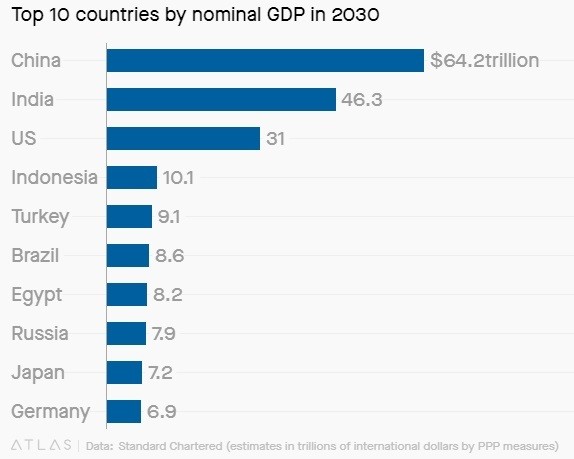
image source: weforum.org
Here are 8 reasons this prediction is likely to come true:
1. Growth acceleration
India’s trend growth is accelerating to 7.8% by the 2020s partly due to ongoing reforms, including the introduction of a national goods and services tax (GST) and the Indian Bankruptcy Code (IBC).

In comparison, China is expected to grow at 6.6% in 2018 and 6.2% in 2019.
2. The world’s largest group of young people
While in the rest of the world, the ageing population is growing, India has become home to the world’s largest group of young people: half of the country’s population is under the age of 25, that is 600 million people.

3. The highest concentration of the urban population by 2020
The UN expects the world’s urban population to increase from 55% to 68% by 2050. This increase is expected to be highly concentrated in just three countries: India, China and Nigeria. India’s contribution is the highest: 416 million urban dwellers by 2050. In 2018 the urban population of the world accounted for 4.2 billion people.

4. $1 trillion real-estate market size by 2030
India is the country where the largest urban transformation of the 21st century is happening.
Key contributors to this growth are the Indian real estate and infrastructure, a young demographic base, growing income levels, expanding middle-class and stable democracy.

5. The fastest-growing cities
Rapid urbanisation is one of the five megatrends identified by PwC to shape the world in 2019. According to PwC, cities are breeding grounds for wealth creation and economic growth.

Indian cities are leading the change. Here is how:
- 70% of future employment is expected to be generated in Indian cities;
- Emerging cities (population less than 1 million) are driving consumption expenditure;
- Significant opportunities for domestic and international investments.
According to research institute Oxford Economics, all the top 10 fastest-growing cities by GDP between 2019 and 2035 will be in India: Surat, Agra, Bengaluru, Hyderabad, Nagpur, Tiruppur, Rajkot, Tiruchirappalli, Chennai and Vijayawada.
6. The 3rd largest consumer economy by 2025
According to the Boston Consulting Group consumer report, India will become the world’s third largest consumer economy by 2025 with consumption set to triple to $4 trillion.

The factors driving this growth are as follows:
- The wealthy will represent 40% of all spending, the largest consumer segment;
- Emerging cities will constitute ⅓ rd. of total consumer spending;
- Nuclear families will make three-fourths of all Indian households;
- Retail sales will increase from 30% to 35% due to digital channels;
- Online will grow to 10% from 8% as a preferred medium of retail spending.
7. The World’s Leader in renewable energy
According to the World Economic Forum, India will soon be leading the world in renewable energy.
India is currently in the second spot after Chile in the 2018 Climatescope report by energy researcher BloombergNEF. But the country’s latest increased investments, clean energy installations as well as the world’s largest renewables auction market have slingshot India in top three from the 5th position it held in 2017.

8. The Innovation Mission and the Innovation Diplomacy
The Indian Government has set innovation at the core of the country’s growth policies.
The country is currently running its innovation programme, the Atal Innovation Mission which started in 2016. The programme was designed to reach its goals by implemented the following: scaling start-up incubation centres, promoting innovation culture among schoolchildren by providing them with hands-on experience in 3D printing, leveraging the Internet of Things and developing robotics. As a result, India moved up in the Global Innovation Index, from 81st place in 2015 to 57th place in 2018.

Innovation Diplomacy was defined by the Mori Government as the ongoing diplomatic efforts in forging strong economic ties with other nations, based on innovation.
The efforts of the Indian diplomats paid off: the India-Israel Innovation Fund was launched in August 2018; the fund encompasses an annual investment of $4 million from each country for five years, putting its total value at $40 million.
Join the Conversation
We’d love to hear what you have to say.
Get in touch with us on Facebook Group and Twitter.
Stuck With Leftover Coins When Travelling?
Stuck with leftover coins when travelling?
Turn them into vouchers with Coindrum!
Coindrum – Making coints count

If you are a frequent traveller, you must have come across this situation many times: getting stuck with leftover coins.
The Problem with leftover coins:
- They are a nuisance during security checks;
- They might not be the currency of your destination;
- They often go unused.
José Rosa, Managing Director of Lojas Francas de Portugal
The new Coindrum service is a great offer for passengers to dispose of their unwanted coins whilst getting more value for their money. Beyond solving an inconvenience the service will also get more people to start browsing the LFP retail offerings.
The Solution by Coindrum
Coindrum provides airports with self-service units that turn leftover coins into duty-free vouchers worth 110% of deposits.

image source: coindrum.com

image source: coindrum.com

image source: coindrum.com

Lukas Decker, CEO and founder / coindrum.com
Benefits of Coindrum for travellers:
- Solves the foreign coin inconvenience for travellers;
- Increases the percentage of people that shop for retailers;
- Speeds up airport security checks.
Andrés Holzer, Vice Chairman of Dufry
Coins were neglected in the past due to their comparatively low value, it took the Coindrum innovation to demonstrate that they can be used as a psychological trigger to outspend their value at the tills.
Benefits of Coindrum for airport shops:
- Get more travellers to start shopping;
- Coindrum users spend on average 10 times what their vouchers are worth, and are even outspending their non-voucher counterparts;
- It beats the current Average Transaction Value.
About Coindrum
- An innovative technology business in the airport retail sector, Coindrum was founded by Lukas Decker in 2012;
- The company is venture capital backed by the founders of Ryanair, Hostelworld and CarTrawler;
- At date, Coindrum has raised a total of $2M in funding over 1 round;
- The self-service units are currently present in nine European airports;
- In 2018, the company signed its first deal outside Europe with Dubai Duty Free.
- Won Best Technology Innovator at the 2018 DFNI Global Awards;
- Won Gold in the Travel and Tourism Startup category at the 2018 Startup Awards.
Join the Conversation
We’d love to hear what you have to say.
Get in touch with us on Facebook Group and Twitter.













